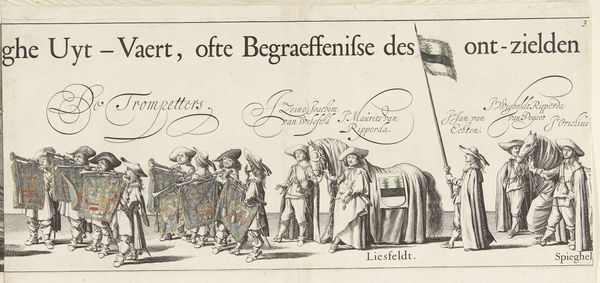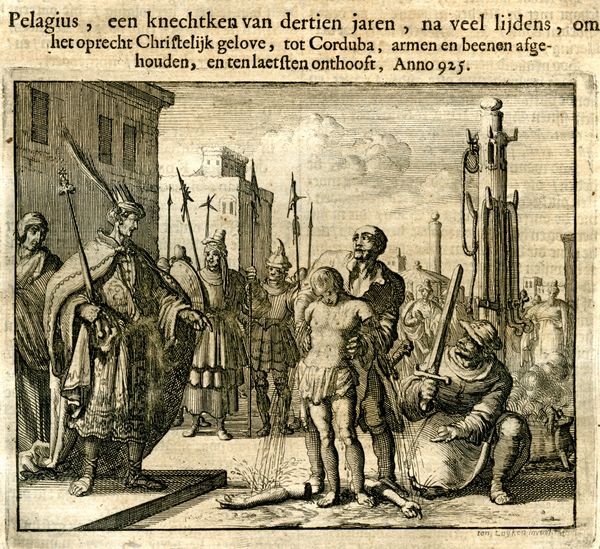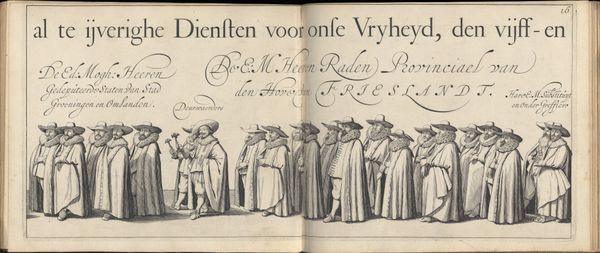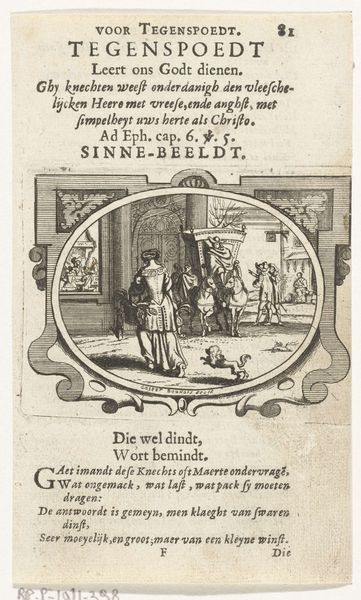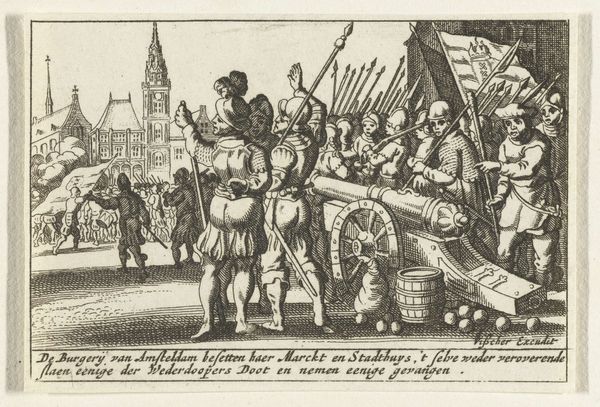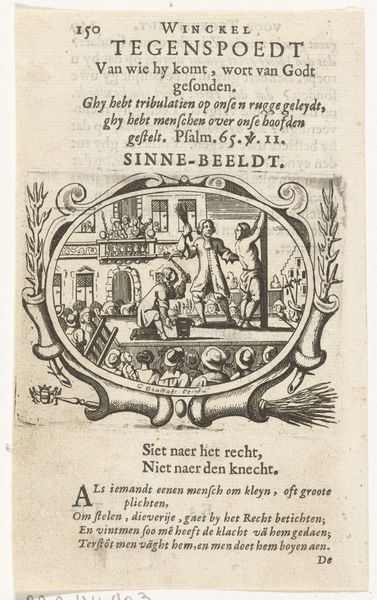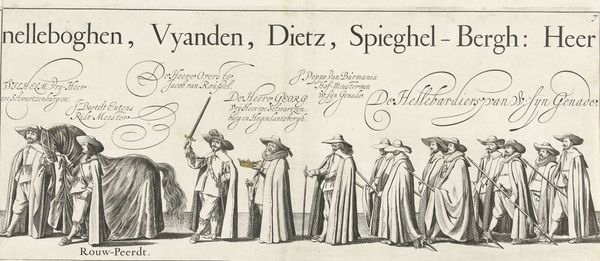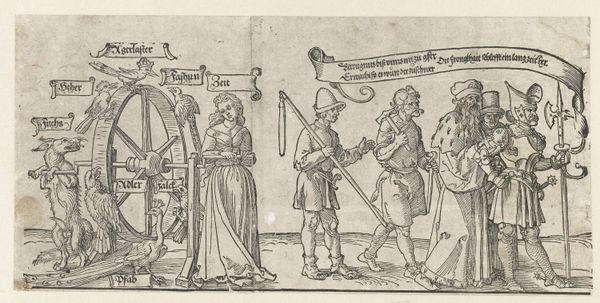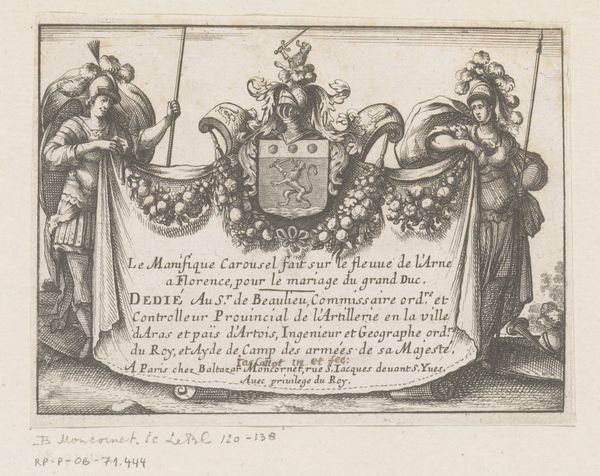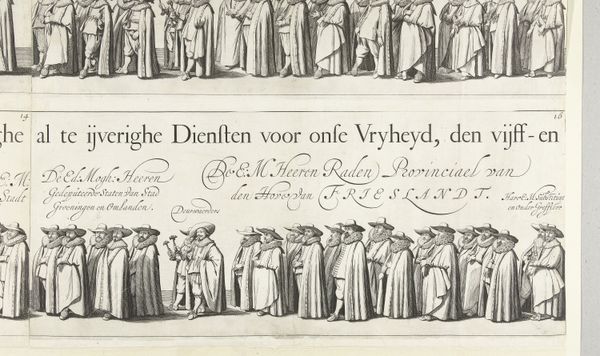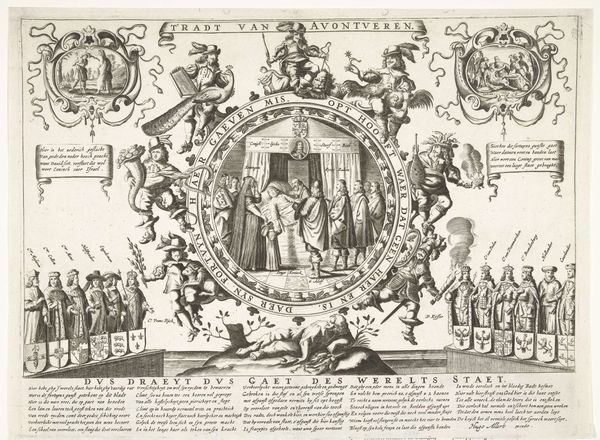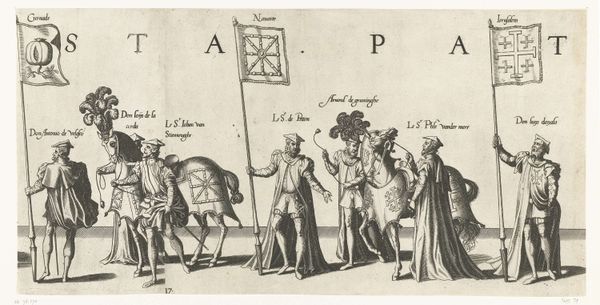
Deel van de begrafenisstoet van Ernst Casimir, graaf van Nassau-Dietz te Leeuwarden (plaat 4), 1633 1634
0:00
0:00
jhermans
Rijksmuseum
print, etching, engraving
#
baroque
# print
#
etching
#
cityscape
#
history-painting
#
engraving
Dimensions: height 220 mm, width 485 mm
Copyright: Rijks Museum: Open Domain
This print, created in 1633 by J. Hermans, captures a segment of the funeral procession of Ernst Casimir, Count of Nassau-Dietz, in Leeuwarden. Prominently displayed are various heraldic flags, each bearing distinct symbols of lineage and power. Notice how the flags with the rampant lion or heraldic shields are not merely decorative; they are potent emblems, proclaiming the identity and authority of the deceased and his affiliations. This symbolic language echoes across centuries, like the Roman standards or medieval banners, each a vessel carrying the weight of history. Consider the lion: a symbol of courage and royalty, it recurs in countless contexts, from ancient Mesopotamia to the European Renaissance. Such symbols transcend mere representation; they tap into a deep well of collective memory, stirring subconscious associations of power, allegiance, and continuity. This visual vocabulary evolves, adapts, yet persists, demonstrating the enduring human need to embody abstract concepts in tangible forms. It is a cyclical progression, where symbols resurface, transformed yet resonant, in the ongoing theater of human expression.
Comments
No comments
Be the first to comment and join the conversation on the ultimate creative platform.
